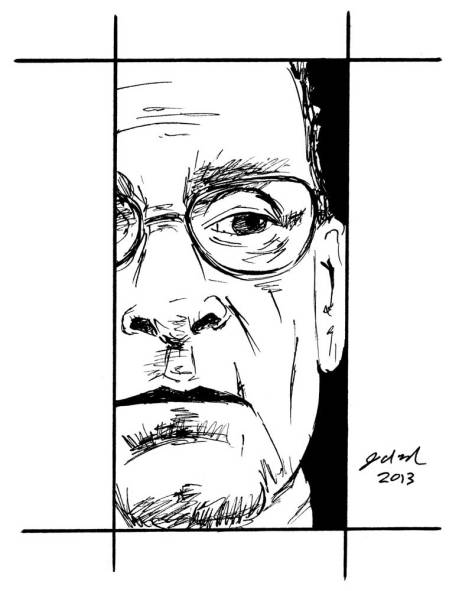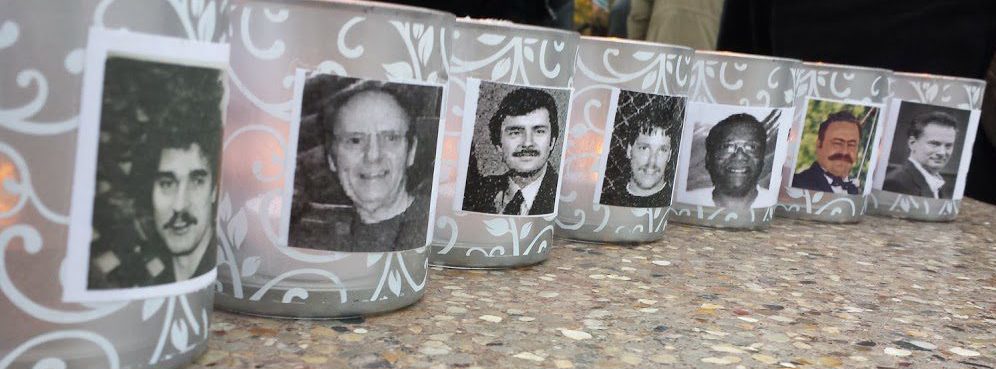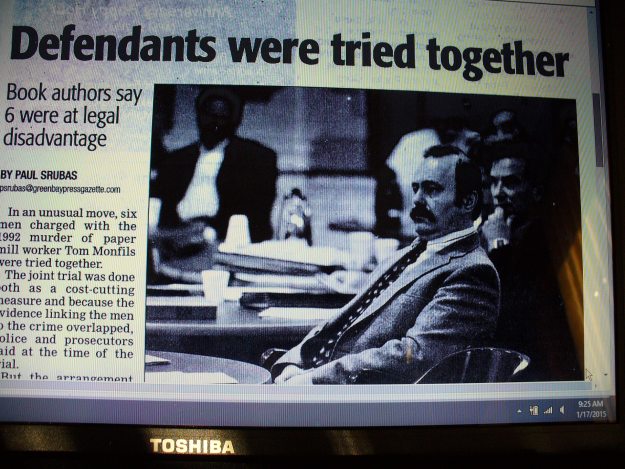A few years ago, Mike and I completed the requirements to visit some of the five Wisconsin men in prison. But we didn’t follow through with the visits just yet. This was noticed by my friend, Kathleen, while reading an article about my mission. During that time Kathleen’s son was in prison on a drug charge and she understood how important it was to her son that she go to visit him. I ran into Kathleen after she had read the article and she asked me, “Why have you not gone to visit these men? It means so much to have that outside contact.” It sparked shame within.
First of all, it was not a quick process to get onto a prisoner’s visitor list. This involved contacting the men, having them request the necessary forms, and then mailing them to me. When I had first received them, I filled them out and sent them to the appropriate address. The men then received confirmation that we were approved for a visit.
But having our names on their list took away from the possibility of obtaining other prospective visitors. An inmate can only have 10-12 people on their list at any given time. We simply dismissed the fact that this process had inconvenienced and disappointed them. We should have been more thoughtful about the intent.
I considered what Kathleen had said and I broached the subject once again with my husband, Mike. I was grateful for his concern over me going alone to a prison, and his thoughtfulness toward my feelings when he agreed to go with me on these visits. I initiated the process once again. We decided to start with one visit and see how it went. We made it through the approval process again and received confirmation to visit Keith Kutska. Now it was time to follow through.
Celebrating his sixty-fourth birthday this year, Keith has spent approximately one third of his life in prison. Through Keith’s revealing letters over a four-year span, we felt we knew him well and we both looked forward to meeting him. Saturday, February 21, 2015 was the big day. We we both felt anxious about going to the prison after reading the endless restrictions regarding dress code and the dos and don’ts listed on the instruction sheets that came with the visitor forms. Who wouldn’t be? We decided to use the two and a half hour drive time wisely, to mentally prepare for the experience. We decided we’d make it a positive one.
We entered a small building and were greeted by a guard who was helpful with explaining the procedure. We soon felt at ease and even exchanged light banter with him. We put our belongings into a small locker and returned to the receiving area. We then passed through the metal detector. We understood these ones were highly sensitive and had heard stories of people who’d been denied admission after failing to pass through the detector without setting off the obnoxious buzzer. You had three chances before being denied access. We were successful and breezed through on the first try! The guard even commended us. We were in!

As we walked to the next building where the prisoners were housed, I don’t remember feeling especially frightened or worried even when hearing the loud clanging of the doors as they unlocked and re-locked behind us. We slowly navigated our way to the visitors lounge and upon arrival, I marveled at how normal everything and everyone looked. Each table was occupied by one prisoner in drab green garb and the family members and/or friends that had joined them. According to the instruction sheet, as many as 12 individuals could visit during one session. Although restrictions about touching were clearly stated on the instruction sheets, children were sitting on the laps of the inmates and we saw lots of hand holding. The atmosphere was as normal as any gathering place on the outside, and we were pleasantly surprised at the relaxed feeling in the room.
I stepped up to the desk where a guard was sitting. “You’re at table number seven,” he said to us. Mike and I sat, observing our surroundings. After ten minutes, Keith entered a far door. We recognized him at once. We immediately waved to him. He waved back and motioned to us that he had to show his badge to the guard at the desk. When he approached us, we shook hands and embraced. As we sat, Keith’s face beamed. But he didn’t try to hide an overwhelming bout of emotion that followed. Tears formed as he spoke about a February eleventh visit with Steve Kaplan, his new attorney. Steve had visited Keith on the same day as I had attended an exoneration hearing for Mario Victoria Vasquez in Green Bay. During their visit, Keith and Steve had lightheartedly discussed concern over my bold presence at the Courthouse, given my public role in the Monfils case. But Keith was deeply touched by my support for Mario. I hoped Keith could see he was not alone on this sentimental journey and that we shared the emotions he felt. There was much to gain from this friendship. Knowing Keith gave us valuable insight into the perseverance of the human spirit. I felt that ours was and is a bond strong enough to transcend time.
As expected, Keith was not shy and our conversation never waned for two hours; the amount of time allotted for weekend visits. In that time, we covered everything from current activities in the Monfils case, Mario’s exoneration, politics, human behavior, the stars, my latest writings, more human behavior, and the future. Both Mike and Keith had many common interests. At one point, I sat silent as they solved every problem imaginable between them. Once in a while I was able to insert a thought or two into the conversation. I even managed to divert their attention long enough to have photos taken! I chided Keith for not smiling in this photo but he laughed and said, “I’m a prisoner, I’m not supposed to smile.”

Mike and Joan Treppa with Keith Kutska. (Photo courtesy of Jackson Correctional Institution)
The guard stopped by to inform us we had five minutes left. It was then when Keith said things that will always stay with me. As tears fell he said,”Between the span of time in 2010, when the Wisconsin Innocence Project had failed to secure a new trial for Reynold Moore and the onset of legal representation by Steve Kaplan in 2013, your letters had kept me alive.” My heart sank. I was speechless. Keith continued and reminded us that the letter in my birthday card to him two years ago had contained the announcement about the law firm getting involved and that he would once again have legal representation. It was just then that I remember comparing Keith to a big cuddly teddy bear; one that is typically a source of great comfort. However, this one was in great need of solace. How desperate I was to provide that for him. But according to his admission, it became apparent that I already had.
Keith’s emotional demeanor was and is a glaring expression of what these travesties of injustices can do to the toughest of souls. Witnessing the wasted years behind bars for a crime that never happened left me feeling angry and more determined than ever to see this mission through. Kathleen was correct in her assertion. Throughout this entire journey, it never ceased to amaze me the importance of reaching out to others and how little effort it actually takes to provide a simple but much needed connection or life line, no matter the situation. Any act can seem insignificant to us but can hold great value to its recipient/s, more so than one could ever imagine.
Here’s a ninety-minute interview on blog talk radio from Feb 25, 2015.




